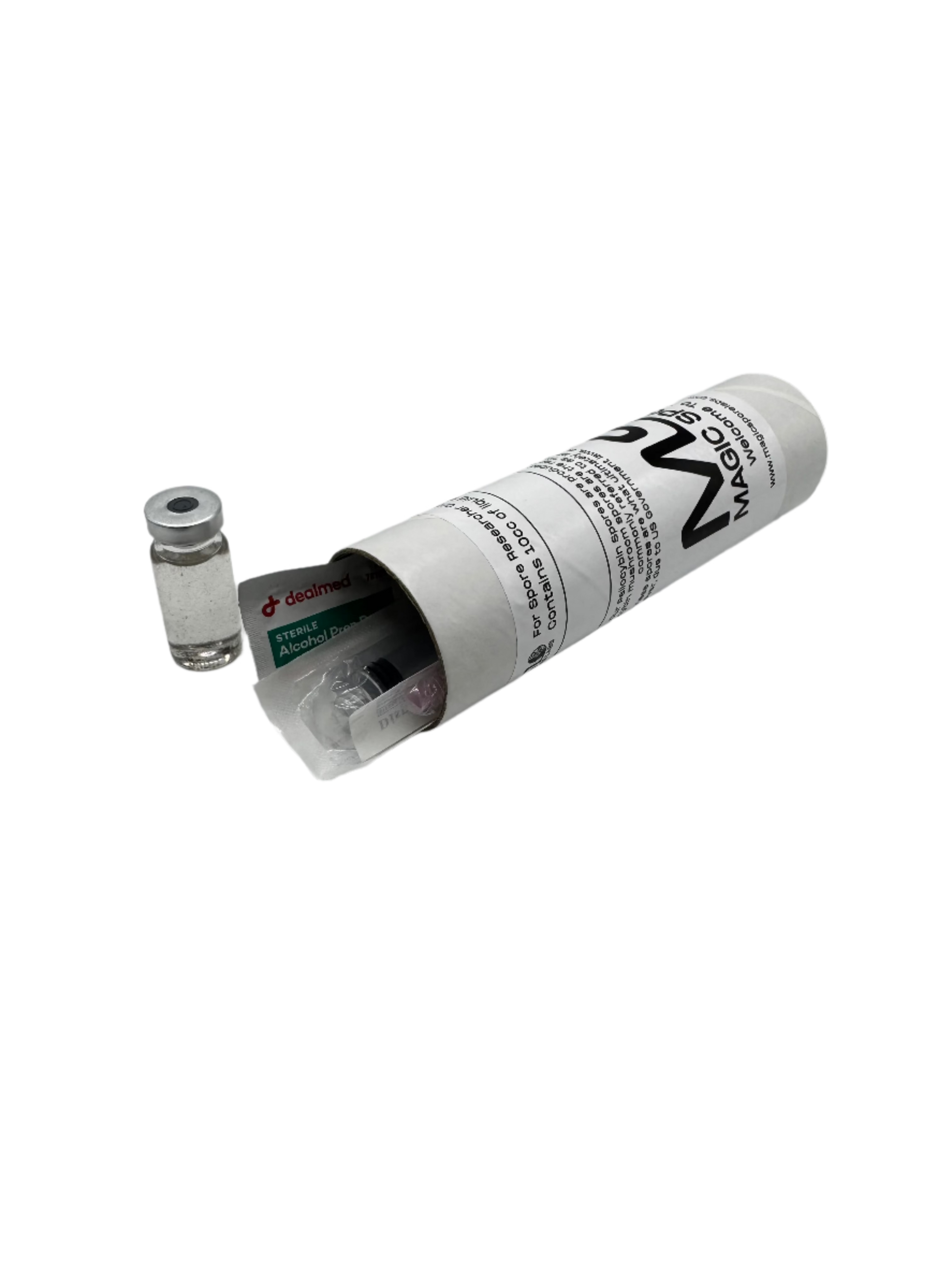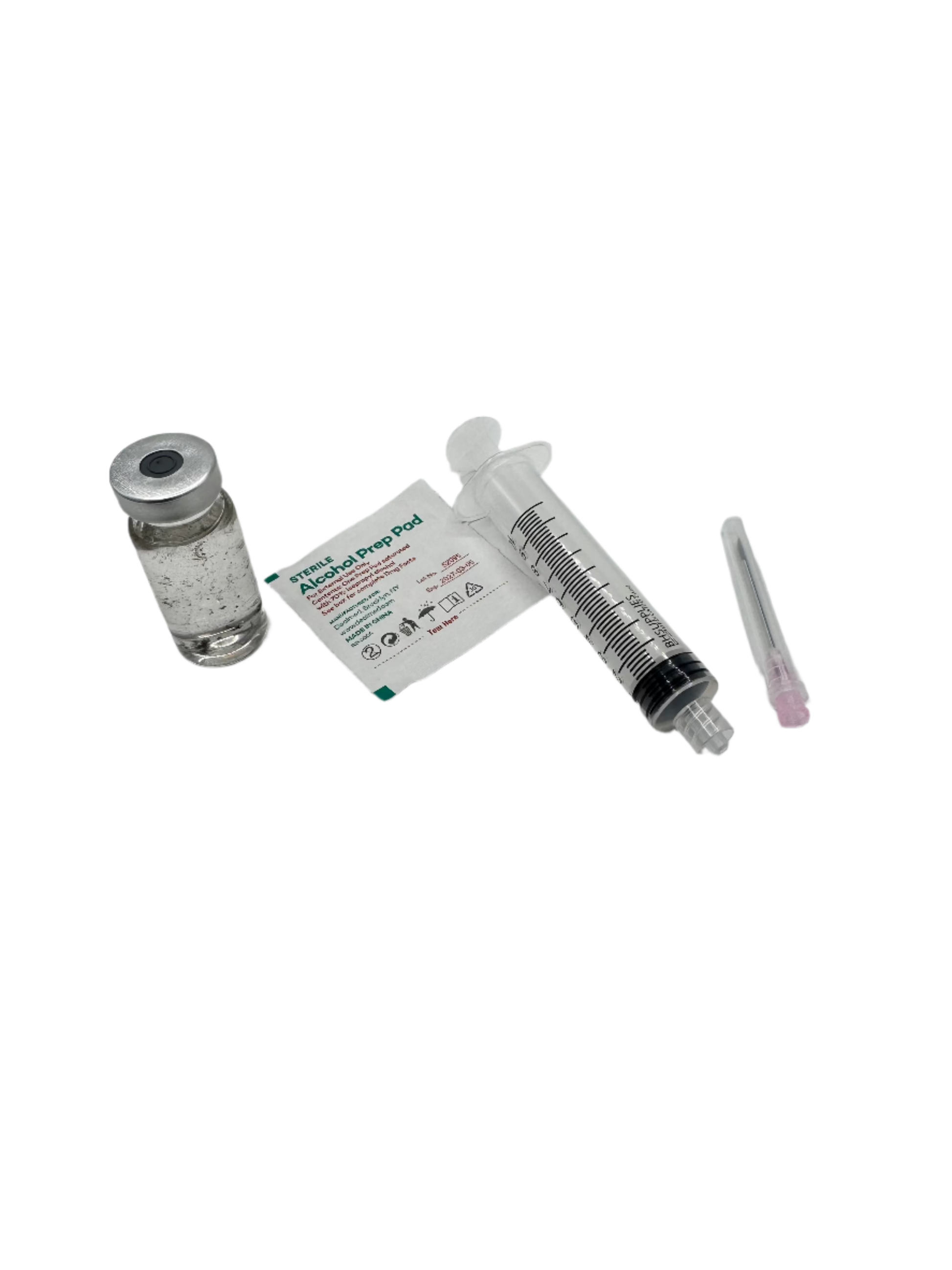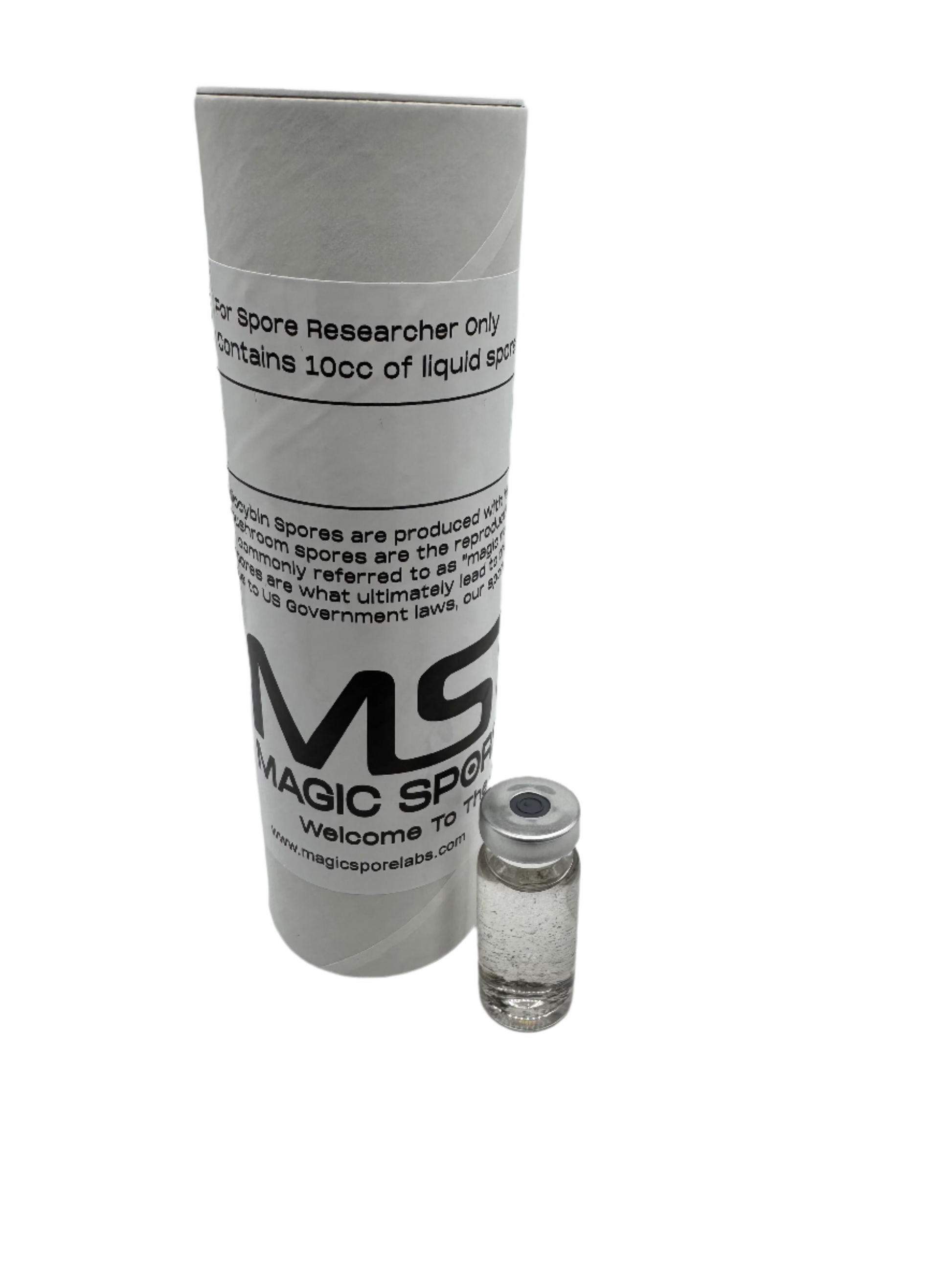Golden Mammoth Mushroom Spores
Golden Mammoth Mushroom Spores
Couldn't load pickup availability





Golden Mammoth Liquid Spores
Golden Mammoth Liquid Spores Review
While some people filled their time with Walkmans and AOL in the 1990s, Canadian mycologist, SporePod, chose to develop a strain with a virus-free genetic line through a process of selective breeding. The result? Golden Mammoth Spores, a strain of Psilocybe cubensis that features massive size and golden caps..
What are Golden Mammoth Liquid Spores? Golden Mammoth Liquid Spores are spore syringes that contain spores of Psilocybe cubensis mushrooms in a liquid medium. Not to be confused with Golden Teacher, the Golden Mammoth strain is a mushroom that is all on its own, invented by the famed Canadian mycologist known as, SporePod. The researcher wanted to create a new, pure, virus-free strain of mushrooms, and Golden Mammoth Mushroom Spores was born. Though paying homage to its massive size, the name is outlived as this mushroom loses its bulk when dried. The strain has gained immense popularity in the research community for its quick growth, reliability, and toughness. It's even more impressive to learn about when being held in a liquid medium, which yields a variety of options, including transforming sterilized grain into a mushroom grain spawn or simply creating continuous amounts of liquid culture.
If you've gained interest in this strain, the Golden Mammoth Liquid Spores would be the best option to consider. From its growth to its reliability, there is plenty to explore when it comes to this impressive mushroom species.
Features and Specifications
- Psilocybe Cubensis
- Subtropical Climate Origins
- Golden Mammoth Strain
- Recommended For Spore Researchers
- Contains 10cc of Golden Mammoth Liquid Spores
- 1.5" 20 Gauge Sterile Dispensing Needle
Product Includes
- 1 x Golden Mammoth Liquid Spore 10cc Syringe
Share
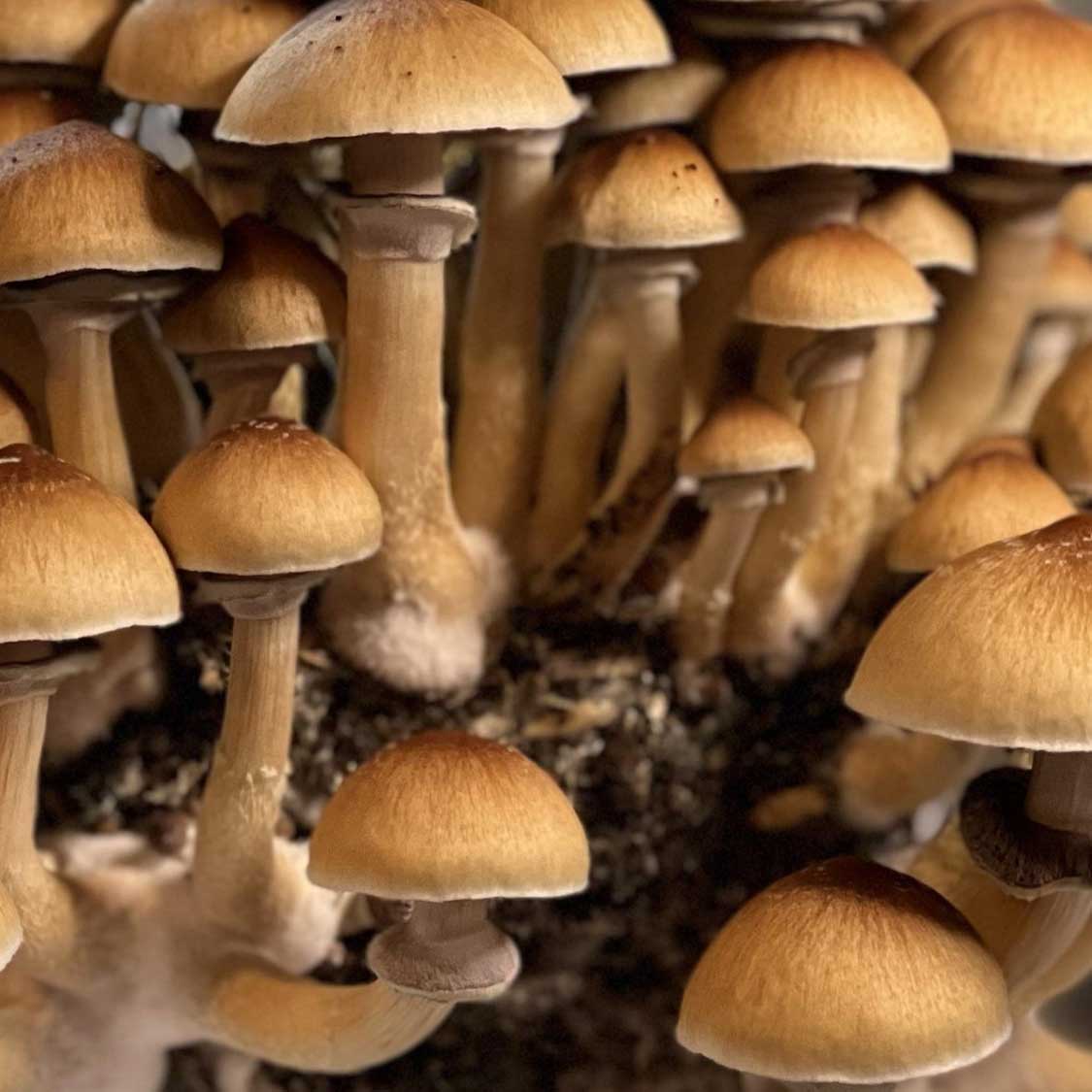
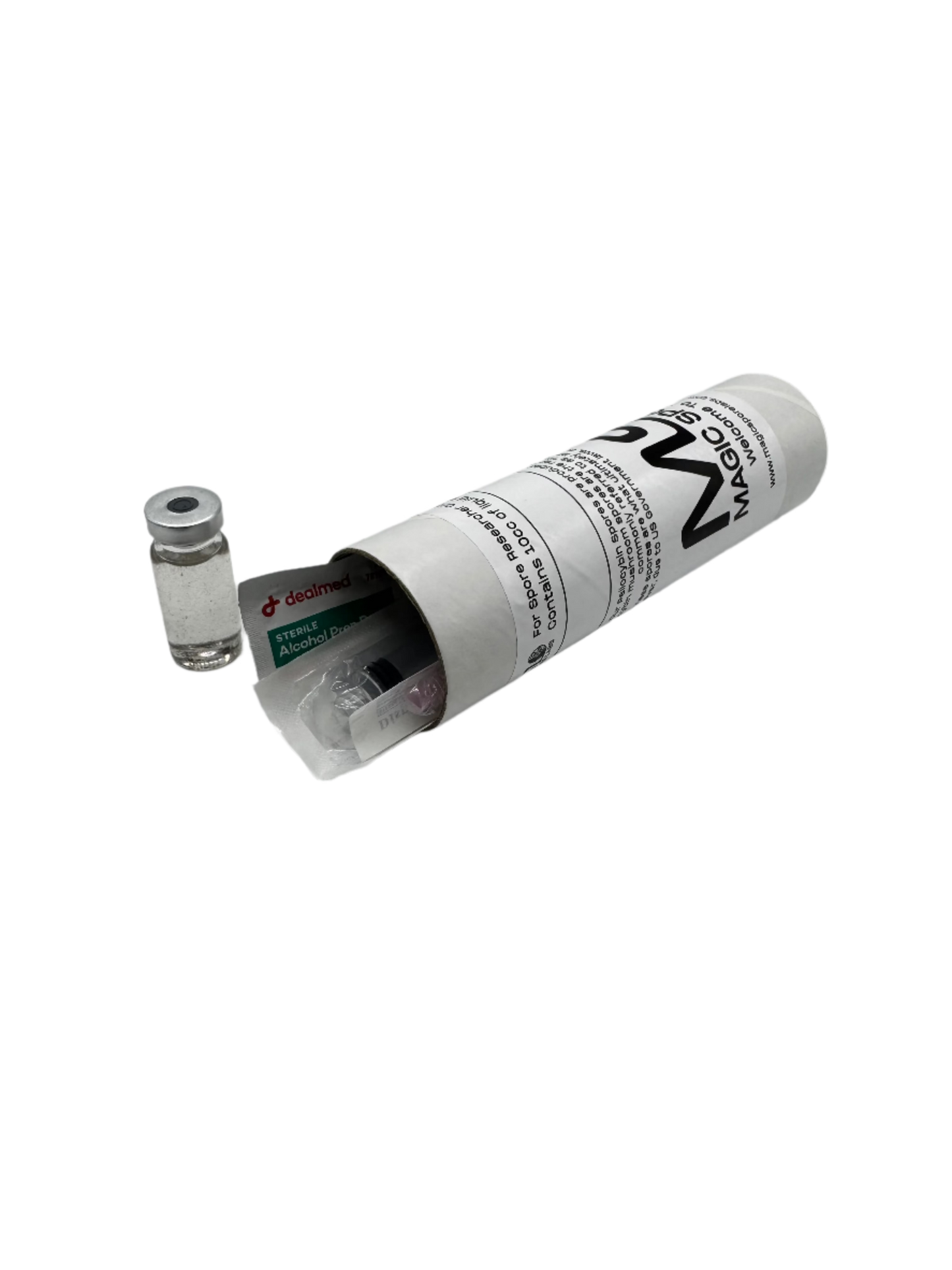


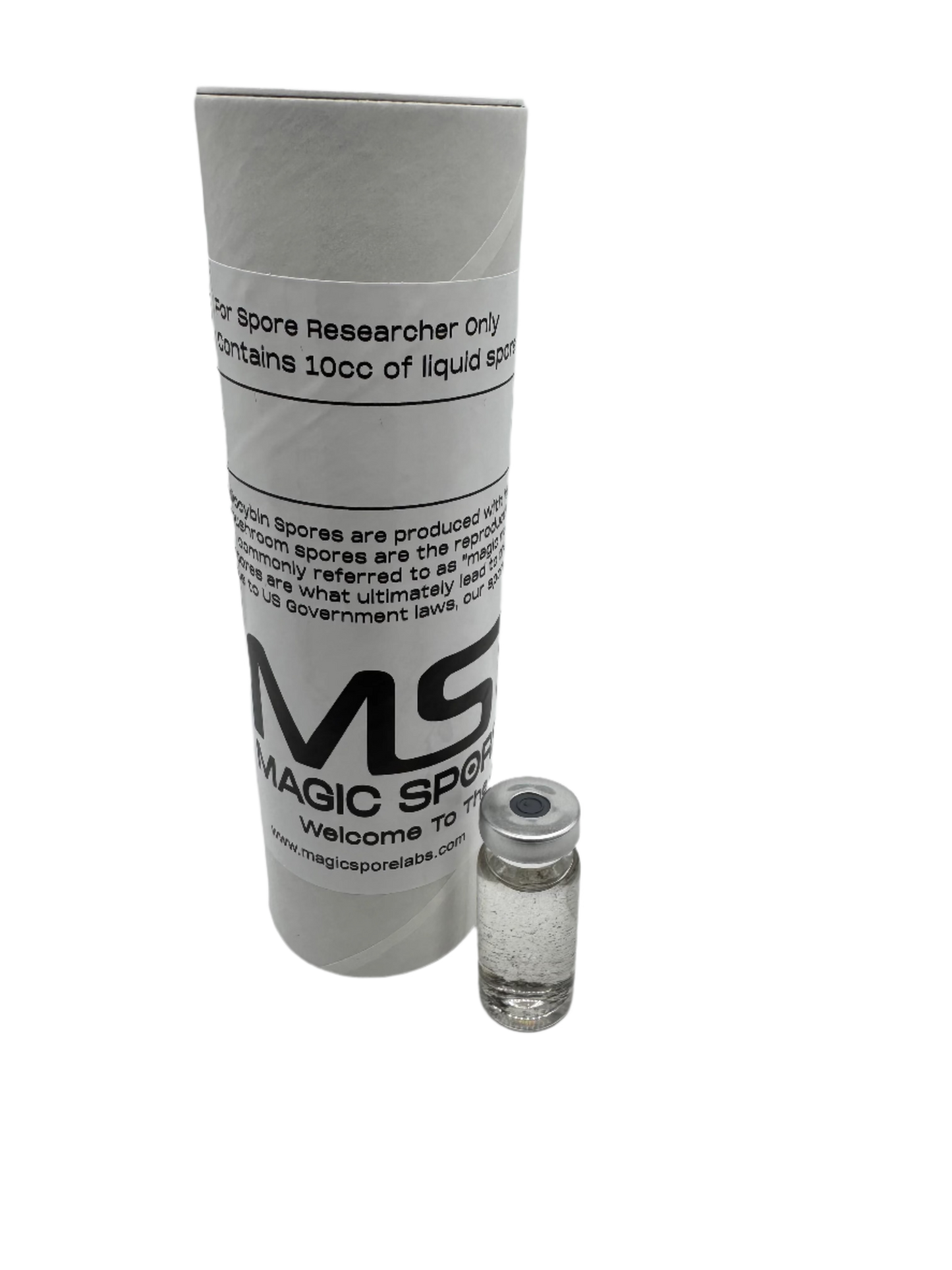
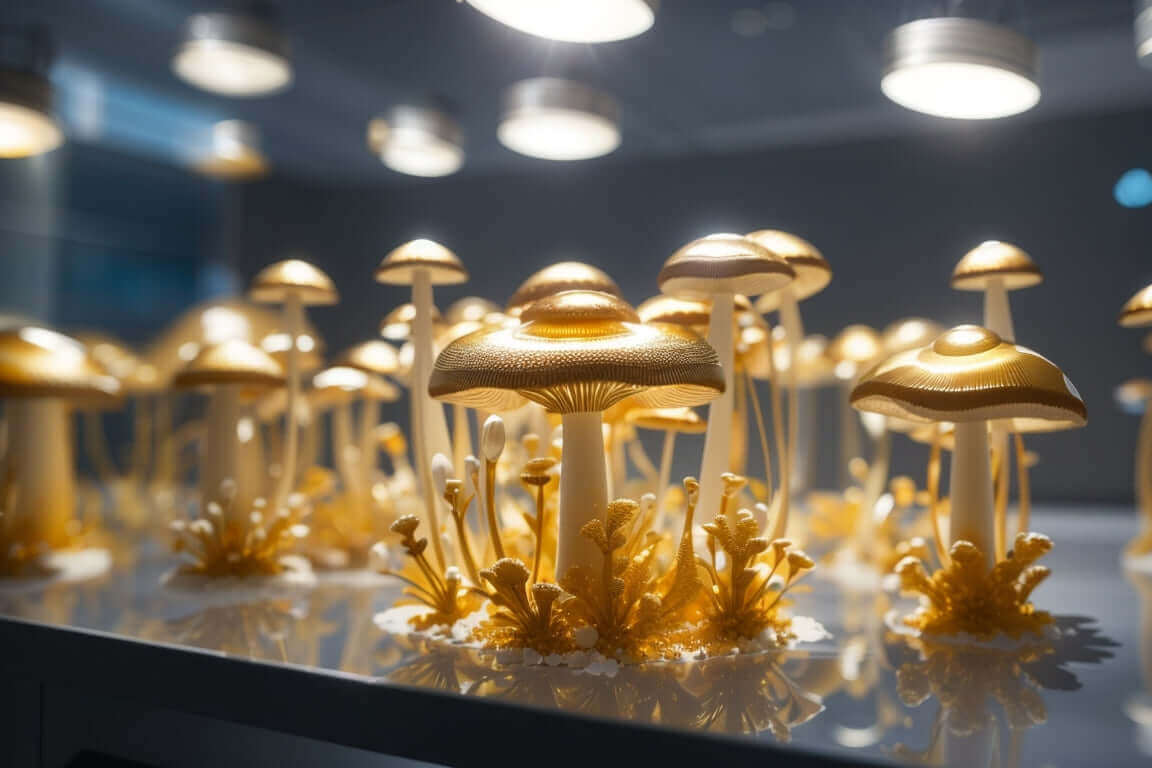
Golden Mammoth Mushroom Spores
Haven’t grown them yet
Ordered and received my order super quick. Looking forward to doing business again. Can't wait to have fun with this beautiful specimen tonight.


